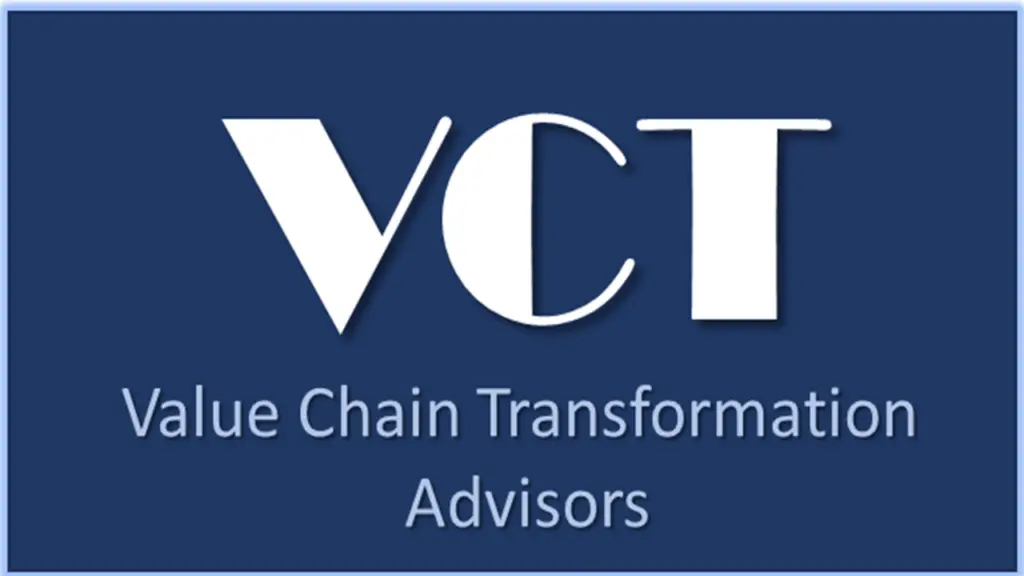Most supply chain teams today spend their days in reactive mode — chasing exceptions, expediting orders, explaining delays. However, savvy supply chain leaders operate differently. While their competitors scramble to respond, they have systems that turn supply chain exceptions into opportunities for resilience.
The difference between the leaders and the competition isn’t effort — it’s their proactive architecture. Read on to explore how their shift from reactive to proactive exception management in the supply chain facilitates resilience in these volatile times.
What Is Exception Management in Supply Chain?
Supply chain exception management is the disciplined process of engineering operations to expect the unexpected. It entails identifying, analyzing, and resolving deviations from planned supply chain operations.
While traditional exception management is reactive, modern exception management uses proactive, tech-based strategies such as real-time monitoring and automated workflows to anticipate potential deviation. This promotes early detection of exceptions and streamlines remediation, ensuring they don’t impact customer satisfaction or business performance.
Common Supply Chain Exceptions and Their Real-World Impact
Check out the most common supply chain exceptions and their impact on operations:
Transportation Disruptions
Transportation and delivery exceptions are the most prevalent supply chain exceptions, and their impact is profound. For instance, disruptions caused by the Suez Canal blockage delayed about $10 billion in goods per day.
These exceptions also throw delivery schedules off, increasing freight costs. A McKinsey report shows rerouting around conflict zones or canal droughts adds two weeks to transit times. Transportation exceptions also damage customer trust. Using real-time tracking systems for route optimization mitigates such exceptions.
Supplier and Production Delays
Supplier and production delays occur when a supplier fails to meet a delivery deadline due to:
- Raw material shortages
- Equipment malfunctions or failures
- Financial instability
- Production capacity constraints
- Quality control issues
Unfortunately, these delays can halt an entire production line, resulting in millions of dollars in lost productivity and missed revenue opportunities. This makes supplier risk management incredibly critical.
Inventory Inaccuracies and Stockouts
Inventory inaccuracies and stockouts arise when stock records don’t match actual stock. They usually cause either:
- Stockouts that cause lost sales and customer churn
- Excess safety stock that ties up working capital and increases storage costs
Moreover, these exceptions lead to a loss of faith in data, causing planners to second-guess system recommendations. This further amplifies the problem of inaccurate stock records as planners turn to manual overrides.
Customs Holds and Compliance Issues
Shipments are sometimes held up at borders for reasons like incorrect documentation, new regulations, or unexpected inspections. These holds add days or weeks of delay to delivery schedules.
The result? Increased freight and storage costs, potential fines, and missed deadlines. For enterprises dealing with perishable goods, such holds may mean total loss of goods.
The Core Workflow of Modern Exception Management
Modern exception management is a continuous multi-step workflow that begins with data collection and ends in automated resolution actions that drive supply chain efficiency and resilience. It flows as follows:
- Real-Time Data Monitoring: Data is ingested and collected from every node in the supply chain: IoT sensors, GPS tracking systems, ERP updates, and carrier feeds. This data provides a complete view of supply chain performance, promoting early detection of potential exceptions across all operational areas.
- Dynamic Threshold Setting: Instead of static rules (e.g., “alert if 24 hours late”), intelligent systems use machine learning to set dynamic thresholds based on historical lane performance, carrier reliability, and weather patterns. This dynamism minimizes false alarms and better accommodates the volatility of modern supply chain environments.
- Automated Alerts: Exception management software usually triggers and sends automated notifications to a replenishment planning platform whenever a set threshold is breached. But the software doesn’t just create an ordinary ticket. It features intelligent priority scoring algorithms that ensure high-impact exceptions receive immediate attention, while lower-priority issues queue for routine processing. Moreover, it routes exceptions to relevant specialists. For instance, transportation delays affect logistics operations.
- Analytics-Driven Root Cause Identification: This stage in the workflow is where raw data becomes actionable intelligence, and exception management shifts from reactive to proactive. Here, AI and machine learning tools analyze patterns to pinpoint the underlying cause of exceptions. For example, while traditional systems would flag a delivery delay, root cause analytics dive deeper to determine whether the delay is due to traffic or is part of a pattern of a specific carrier’s poor performance.
- Resolution Workflows: Once the root cause is identified, the platform generates automatic, actionable recommendations for resolution. Routine issues are immediately addressed while more complex exceptions are escalated to human decision-makers for review.
Tips for Setting Smart Triggers and Thresholds
Craft smart triggers and thresholds to build an effective supply chain exceptions management system. Failure to do so means your team will drown in false alarms, waste valuable time on non-issues, and miss the issues that truly impact performance and customer satisfaction.
For instance, a generic rule like “every late shipment is an exception” would flood the system with alerts, even when delays are commonplace with a particular route or carrier. The result? Alert fatigue is causing teams to ignore critical warnings.
To set smart triggers and thresholds:
- Use a data-driven approach that considers historical performance variability, seasonal patterns, and current market conditions. This data lets you establish baseline metrics, such as average delivery times or inventory turnover rates.
- Layer in predictive inventory management to anticipate variability like seasonal demand spikes.
- Use machine learning to refine thresholds continuously. This step further reduces noise, ensuring alerts prioritize issues that are genuinely a threat.
- Regularly review and adjust based on real-time updates and historical data to ensure the triggers and thresholds you’ve created remain accurate as business conditions change.
Tools and Technologies Driving Faster Exception Resolution
Modern supply chain exception management is an intelligent approach built on tech-based strategies like real-time monitoring. These strategies are made possible by the following advanced technologies:
AI and Predictive Modeling
Artificial intelligence algorithms analyze vast volumes of historical and real-time data to identify patterns that predict potential exceptions. This detects risks hours, days, or even weeks before they become operational issues.
For instance, thanks to natural language processing (NLP) capabilities, AI and predictive modeling can automatically analyze supplier communication, customer feedback, and market intelligence to identify a supplier delay even before it happens.
IoT and GPS Tracking
IoT and GPS tracking technologies provide real-time visibility into shipment location, condition, and estimated arrival times. For instance, temperature sensors, shick detectors, and other IoT devices monitor product condition during transit and storage. This allows exception management teams to identify potential quality deviations beforehand.
Integrated Planning Platforms
Cloud-native supply chain solutions like GAINS integrate directly with replenishment planning platforms such as transport management, ERPs, and WMS. This connection ensures detected exceptions trigger intelligent resolution.
Three Core Metrics That Define Exception Management Excellence
So, you’ve implemented a modern exception management framework. How do you measure its effectiveness? Here are three core benchmarks to prioritize:
- Exception-to-Resolution Time: Also known as mean time to resolution (MTTR), exception-to-resolution time is the average duration between exception detection and resolution. A shorter MTTR indicates a more efficient and effective system. Leading teams report an average resolution time of less than 24 hours for routine exceptions, and about four hours for critical issues.
- Percentage of Automated Resolution: This metric measures the share of exceptions resolved without human intervention. A high percentage suggests workflows are well-defined and trusted. It also speaks volumes about the efficiency of an organization’s exception management software. Software like GAINS automates 70-80% of routine issues.
- Customer Impact Scores: This benchmark measures the impact of exceptions on customer service levels, delivery performance, and customer satisfaction. Your goal should be to drive it to zero.
Case Scenarios: Turning Disruptions Into Advantage
Check out these hypothetical case scenarios where tools like GAINS turn supply chain disruptions into a competitive upper hand:
- Supplier Delay: A manufacturer using GAINS is notified by their supplier of a component delay for a high-volume product. Thanks to Agentic AI, GAINS immediately flags the issue. The software’s analytics module determines that although the component is late, there’s an overstock of the same in one of the manufacturer’s warehouses. The platform automatically creates and routes the necessary transfer order and updates the profitable replenishment plan for approval. The result? Production continues as planned.
- Unexpected Demand Spike: A retailer experiences a sudden, unexpected demand spike for a new product, depleting its stock in a few hours. The exception management platform detects the sudden shift in its real-time monitoring of sales data. It then dynamically adjusts reorder points, increasing orders to prevent stockouts. This maintains service levels, ensuring continued customer satisfaction.
How GAINS Helps Resolve Exceptions Before They Escalate
GAINS Decision Engineering & Orchestration (DEO) doesn’t just detect supply chain exceptions, it facilitates their resolution proactively. How? GAINS composable architecture directly integrates with your enterprise’s ERP, WMS, TMS, and other systems in your tech stack. Consequently, detected deviations automatically trigger coordinated corrective actions in respective systems and processes, thus speeding up resolution.
The integration also offers GAINS Agentic AI direct access to your replenishment planning platforms. Our AI tool continuously monitors supply chain data and identifies patterns and signals that predict potential exceptions before they materialize.
Furthermore, our Agentic AI also continuously analyzes and measures the effectiveness of your dynamic triggers and thresholds and offers recommendations for improvement. This, in turn, enhances the quality of your triggers over time. These are just a few ways GAINS enables organizations to resolve exceptions before they escalate. Request a demo today to test more of what we have to offer.



